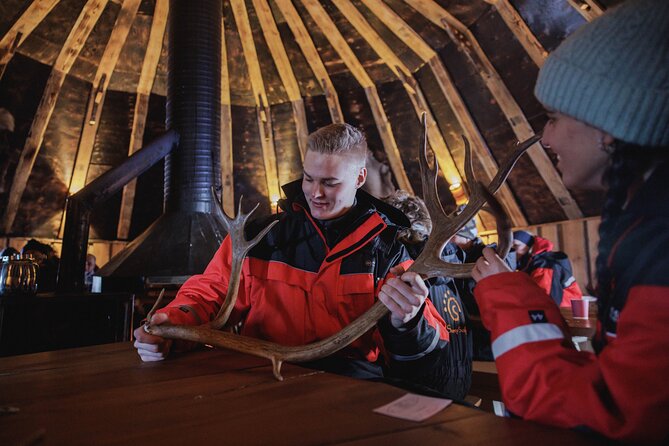Best telescopes for viewing planets and galaxies
When it comes to the best telescopes, there’s a wide variety of reflector, refractor and Cassegrain telescopes to choose from.
Unfortunately, there is no one size fits all solution to answer the question of which is the best telescope for viewing planets and galaxies. However, we’re going to check out some of the top options for both beginners and advanced astronomers.
This will depend on your budget, how you will be using the telescope, and where you will be using it – if you only have a limited amount to spend, check out these awesome $300 telescopes.
So, if you’re using your telescope in your backyard, you will have far different needs compared to someone who wants to take a telescope traveling or wants to use it for astrophotography.
To help you to make your purchase decision, we’ve compiled some picks as the best telescopes for the average person who wants to explore planets and other DSO’s in finer detail.
Aperture: 203mm | Focal Length: 2032mm | Focal Ratio: f/10.0
The Celestron NexStar series is my favorite telescope around at the moment. The Celestron NexStar 8SE is the premium range, but you can also get the cheaper versions than this, which is what I recommend for many beginners.
If you’re on a budget you can check out the Celestron Nexstar 6SE, and potentially the even smaller Nexstar 4SE, you’ll get a telescope that’s powerful enough to see star clusters in the night sky, but also computerized too, which makes it very easy to find brighter deep sky objects too.
The number of each telescope just refers to the aperture of each telescope, and if you combine the 8SE’s eight inch aperture (which means it allows more light in) with its technology, you get a really useful telescope. You can opt for a longer focal length if needs be, but for the average person, this will likely be the perfect telescope to get started.
However, this doesn’t mean that you should just opt for the 8SE straight away – the 6SE does have some advantages, like being lighter & is less affected by things like dew. So, it really depends on what you’re looking for. If you’re looking for the best telescope, then I’d spend my money on the 8SE – only more advanced astronomers will need to do this, though.
The 8SE is still only 11kg – including the optical tube, tripod and mount head – which makes it light enough to move around if you need to. It’s also very sturdy too, which is a necessity if you’re going to be taking your astronomy seriously. But more impressive is the optical tube, which Celestron have been using pretty much the same C8 model for 50 years because it works so well.
The 8SE is my most recommended scope because it’s computerized. This means it’s really easy to just set your telescope up, align it and start your adventure looking for constellations.
This scope allows you to use the GPS feature to pick what constellation or DSO you want to see in the sky, and it will automatically show whatever you choose, making it much easier to use than searching for something with a manual telescope.
You can use the 8SE with batteries, but it does run through them very quickly. So, you’ll either need to plug it into your mains, or if you want to use it outdoors, then you’ll ideally want to set it up with another form of power (I use a cigarette lighter adapter which works great).
Optical tube assembly is actually pretty easy, and even though the telescope looks very large and difficult to set up, it’s quite simple – and probably easier than your average reflective telescope.
This is one of my favorite telescopes for either beginners or more advanced astronomers. The Schmidt-Cassegrain design is a little different than what most people are used to, but it’s an ideal compound telescope that provides the best of both refracting and reflecting technology.
- Easy to use: The Celestron NexStar Series is very easy to use, even for complete beginners. It’s the perfect Schmidt Cassegrain if you want to find deep space objects.
- High performance: If you want to see planets in detail, you’ll need a telescope that’s capable like the 8SE.
- Relatively light: For a computerized telescope with a stainless steel tripod, the 8SE weighing only 11 kilos is pretty good.
- Too expensive for some: Although it’s a great telescope, it might be a little too expensive for some people.
- Limited Magnification: If you’re going to try and use batteries, you’ll need a lot – this beast runs through batteries pretty quickly!
The Celestron NexStar series is great, and it’s worth looking at the 8SE, 6SE or even the 4SE if you’re looking for the best telescope for viewing planets.
It’s perfect for amateur astronomers and even more advanced users who can really make the most of its computerized design, and the high quality optics are pretty hard to beat.
Aperture: 72mm | Focal Length: 420mm | Focal Ratio: f/5.9
Sale Sky Watcher Sky-Watcher EvoStar 80 APO Doublet Refractor – Compact and Portable Optical Tube for Affordable Astrophotography and Visual Astronomy (S11100)
- EXPERTLY MATCHED GLASS: The EvoStar series features a matched doublet objective including one synthetic fluorite element, providing excellent color correction for visual and photographic uses
- OUTSTANDING COLOR CORRECTION: Using the finest quality glass and proprietary Metallic High-Transmission Coatings (MHTC), EvoStar refractors produce tack sharp images with accurate color and minimal aberrations
- EVOLVES WITH SKILL: No need to replace this telescope as your skill set evolves. Whether you’re a seasoned astrophotographer or a budding novice, EvoStar refractors are versatile enough to use as your primary optical tube as your skill-set improves
Although I love the 6SE, if you’re looking for a telescope to take astrophotography images, then I’d prefer to go for an apochromatic refractor. With an APO, even if you’re brand new to astrophotography, you’re going to get better quality images quicker than with an 6SE (although it’s still possible with an 6SE).
Astrophotography isn’t the easiest hobby to just pick up and start doing, but an APO refractor makes it a little easier. If you start your journey with a reflector or a cassegrain, you’re only going to make it more difficult for yourself in the beginning. A telescope like this one will make it very easy for you to get used to aligning your scope & mount.
But what about this model particularly makes it stand out? Well, the Skywatcher ProED has an 80mm aperture with a f/7.5 focal length (600mm) which will allow you to get some really sharp images whilst practically eliminating all chromatic aberration. This model is built to last, and it’ll enable you to get some sharp images of the night sky.
The telescope comes with a good quality Crayford focuser, which helps you to maintain clarity even when you’re at maximum magnification. Though pinpoint accuracy may not be the most important thing for cheaper telescopes, it’s definitely an important factor when it comes to astrophotography.
If you want to use this Skywatcher for astronomy, you need to ensure that you get the right mount with it (in truth, getting the right mount is as important to astrophotography as the telescope itself!). I personally recommend the Celestron AVX Mount, which works perfectly with this scope.
- Value for Money: You aren’t going to find a better telescope for this price that has the same capabilities of producing brilliant detail.
- Light & portable: If you’re just getting into astrophotography, the Skywatcher will be perfect because it’s easy to carry anywhere.
- Extras: This telescope comes with a ton of extras for you to make use of, meaning you won’t need to spend money on tons of accessories.
- Lens Cap: I’ve had a few issues with the lens cap staying on, but maybe that’s just because I want to keep my telescopes in perfect condition.
- Upgrades Needed: Over time, you can easily spend quite a bit on upgrades for this model as you find little areas to improve upon e.g. the focuser, but this is true with any telescope.
- Not for newbies – If you’re interested in beginner telescopes, then this likely won’t be the right choice. Whilst it’s an excellent telescope in its own right, it can be very tough to use for those new to the hobby.
The Skywatcher is perfect for nighttime photography, and the telescopes ability to track objects is unparalleled for the price. Both intermediate users & advanced astronomers can make use of this one, and although astrophotography telescopes don’t come cheap, this is excellent value.
Aperture: 130mm | Focal Length: 1000mm | Focal Ratio: f/8.7
For those looking for a telescope that is powerful yet reasonably priced, it’s worth looking at the Celestron Astromaster 130EQ. It’s a Newtonian, which is one of the most common types of reflector telescopes.
Whilst a refractor telescope may be the wisest choice if you want minimal setup, a reflector telescope will offer you the maximum magnification you can get within your budget. This is the good thing about Newtonian reflectors specifically; they’re great value for money. In fact, they’re actually known to be the best bang for your buck if you’re looking to get a telescope with a high aperture without having to spend a fortune.
It is relatively lightweight too, so you won’t need to worry about it being a hassle to carry, even though the optical tube is pretty large! Fortunately, this allows the telescope to collect light – when you combine that with top grade optical coatings, you should be able to get some crisp views of the night sky.
The Astromaster series is known for being pretty good value for money. With a 114mm aperture and a 1000mm focal length, this gives us a focal ratio of f/8.7. It comes with eyepieces included in the package which will give you the ability to get a magnification up to 269x.
The only limitation of this model is that it only has 114mm of aperture. This might not be enough for more experienced astronomers trying to get in depth views of distant planets and stars. But for the beginners, this is probably the best option currently available.
- Simple setup: Typically reflectors can be a difficult to set up. However, this telescope is a breeze to get ready for use.
- Great price: In terms of value for money, this is one of the best prices I’ve seen for this telescope recently.
- Eyepieces included: This is a package deal, and comes with eyepieces included in the deal.
- Not good for astrophotography: Whilst it’s absolutely fine option for anyone who may want to do casual astrophotography, it’s not good for more advanced users.
- Limited Aperture: Compared to more expensive models, the aperture is quite low and it might not give in depth views of things far in the distance.
For those looking for a telescope to get started with, then the Astromaster 130EQ definitely provides great value for money. It’s a great place to start your astronomy adventure.
Aperture: 114mm | Focal Length: 450mm | Focal Ratio: f/4.0
Sale Orion StarBlast II 4.5 Equatorial Reflector Telescope
- The whole family will enjoy the StarBlast II 4.5 EQ thanks to its parabolic primary mirror, convenient portability, and easy-to-use operation
- Views of everything from the Moon and planets to distant objects like star clusters and galaxies appear bright and clear through this petite telescope
- A fantastic wide-field astronomy telescope with reflecting optics large enough to keep you and your family busy viewing for years to come
Despite its modest price tag, the Orion StarBlast is a wide field telescope offering a 4º field of view. It is supplied with two Kellner eyepieces, a 6 mm and 17 mm. While these eyepieces are a little cheap, they will be enough to get you started.
This only provides 76x magnification, but you can upgrade your telescope with additional eyepieces such as a 24 mm and 32 mm to further expand your range. Particularly if you opt for higher quality eyepieces such as a Plossi or Barlow that would significantly improve your viewing experience.
The StarBlast is also supplied with a red dot finder that is a great resource for a wider field of view. However, you will struggle to attach your camera, as there is no adapter, so if you’re keen to get started with astrophotography, this is not the right choice for you.
This reflector scope has a focal length of 450 mm, so it provides optical power unprecedented in this price range, and you can add filters to view darker nebulae. It has a low focal ratio, which means that it’s best suited to getting wide views of the sky as opposed to seeing distant galaxies in detail.
Although searching for objects maybe a little challenging, this telescope is actually great fun. If you upgrade with better eyepieces, you’ll be able to see the phases of Venus with ease.
- User Friendly: This budget friendly scope arrives pre assembled, so it is remarkably user friendly, particularly for beginners.
- Great Focal Length: The 450 mm focal length offers fantastic light gathering potential.
- Limited Eyepieces: The included eyepieces are cheap, which may be enough to get you started, but will need to be upgraded if you want to get more serious about astronomy.
- Not Astrophotography Friendly: It is not possible to attach a DSLR camera
The Orion Starblast is one of my favorite choices if you’re looking for a cheap and cheerful telescope – you won’t be disappointed with this model.
Aperture: 70mm | Focal Length: 400mm | Focal Ratio: f/5.71
This scope has been specifically designed to be portable. While it may lack the quality of more expensive refractor telescopes, it has a 70 mm f/5 refractor that can offer sharp images and up to 40x magnification.
There is a plastic dew shield, two eyepieces, an aluminum tripod, and a padded backpack to carry everything. The eyepieces are 20x and 40x magnification, but you can also expand the range by purchasing additional eyepieces. All of the included kit fits perfectly in the backpack, so you can comfortably carry everything on your travels without feeling encumbered.
The TravelScope is also supplied with a copy of Sky X software. This a great resource that helps beginners to learn more about the stars, as it contains an impressive 10,000 object database with printable sky maps.
Although some people may argue that this scope looks cheap, it is more than capable of providing decent images. This aesthetic label is due to some of the parts being plastic, and some users may find the finder and focuser are a little fragile. However, overall, this scope is actually resistant enough to cope with regular use.
The tripod is a little lightweight, so if you’re going to be stargazing in rough terrain, you may need to upgrade to a more rugged tripod. However, it works well with this refractor telescope that allows you an easy setup process at an affordable price.
The Celestron TravelScope is a great option if you want to use your refractor telescope out and about without breaking the bank. Although it may not offer the results of one of the most expensive telescopes, it is great for beginners or those who worry about dropping their equipment when hiking to the perfect viewing spot.
- Excellent Portability: With its supplied backpack that can accommodate the telescope and accessories, the TravelScope kit weighs only 3.3 pounds.
- Superb Value: This telescope offers a great balance of features without a hefty price tag.
- Durable Finish: Although some of the components are plastic, this telescope is durable and reliable.
- Tripod: Some users will find the tripod is a little lacking for uneven surfaces
- Delicate Parts: Since the finder and focuser are made of plastic, they can be a little delicate
- Limited Magnification: Since this scope can only deliver 40x magnification, more experience stargazers may find it lacking.
If you’re looking for a cheap, portable option, then you’re not going to find many better than this Celestron Travelscope.
Aperture: 130mm | Focal Length: 650mm | Focal Ratio: f/5.0
The Meade 216004 offers a focal length of 1000 mm with a 114 mm aperture, providing excellent image quality. There is an equatorial mount that includes slow motion control, so you can easily view in different directions to capture the best shots.
The 216004 is supplied with several accessories, including a red dot viewfinder that is a zero magnification feature that creates a small red dot to act as a pointer in the sky. You just need to look through the sight and move your scope until the dot has merged with the object. There is also 3 eyepieces and a 2x Barlow Lens that provide the versatility to capture short and long range objects.
When fully assembled, this telescope weighs 22.3 pounds, making it a little cumbersome to transport. But if you have a set spot for your stargazing, this is certainly a great package to consider as an entry level telescope.
Like all of the Meade Polaris scopes, this model is also supplied with a copy of AutoStar Suite Astronomer Edition. This software shows more than 10,000 objects to help you to learn more about the night sky. Since this scope provides clear, bright images, you’ll be able to explore Saturn’s rings, the craters of the Moon, and much more to capture some fantastic shots with perfect clarity.
- Software Included: This scope is supplied with a DVD of AutoStar Suite Astronomer Software.
- Red Dot Viewfinder: This acts as a pointer to sight any celestial objects
- Low cost – If you’re on a tight budget, then a complete package telescope like this may make sense, as you won’t need to spend much more on accessories.
- Premium Spec: While this scope does have some premium features, this is reflected in the price.
- Heavy: With a weight of 22.3 pounds, this is not the easiest scope to move around.
If you’re after a cheaper astrophotography telescope, then you’ll want to consider this Meade refracting telescope. It’s ideal if you’re after a cheap telescope that will still be suitable for planetary viewing.
Sale Educational Insights Nancy B’s Science Club MoonScope Kids Telescope, STEM Toy, Gift for Boys & Girls, Ages 8+
- SPARK MORE CURIOSITY! Encourage your kiddo’s natural curiosity about space, science, and the universe with this fully functional, easy-to-use MoonScope and robust journal packed with engaging, hands-on, astronomy activities
- REAL, WORKING TELESCOPE: Explore Saturn, Jupiter, and even the mountain ranges on the moon, magnified 90x larger
- 22-PAGE ACTIVITY JOURNAL: Eat your way through the lunar phases, write your own moon myth, draw the man in the moon, and so much more – the included journal is packed with inspiring, hands-on activity ideas
This bright, colorful telescope is ideal for kids to work things out for themselves. There are interchangeable, adjustable sections that can be swapped out for different types of astronomy. This sounds complicated, but the practice is actually quite simple. Your child will be able to experiment with lenses, filters, scopes, and tripods to discover clear, bright images.
The Nancy B telescope stand out feature is “Moonscope”. This is a pair of eyepieces and magnification settings that will allow your child to discover the lunar craters. Even if the night is overcast, your child can set up this telescope and scan the skies with the best settings.
Other notable features of the Nancy B scope is that special filters can be placed over the lens if any object is too bright to see with the naked eye. Power levels can be viewed using a simple LED system, and there is a 22 page journal included to learn more and record observations.
This makes this a great first telescope, so children can learn about the stars and experiment watching the night sky. It’s not going to be suitable for seeing faint objects as it’s just a starter scope, but it still has fairly decent optics considering its build.
- Simple Design: Although this scope has a simple design, there are lots of viewing options for you to take advantage of too.
- Great Magnification: This scope offers a decent magnification range, and at its maximum magnification, you should be able to get some nice close ups of the moon.
- Predetermined Settings: No fine tuning is possible, as the scope only has predetermined magnifications.
- For kids only – This is a simple childs telescope that is perfect for helping them to learn, though don’t expect too much from it in terms of power and ability.
Ideal for kids who are just getting started with their astronomy addictions, this Educational Insights telescope would be perfect for younger children.
The M2 is the next generation of F-ED scopes. This is a spotting scope that is portable enough to be used as a travel telescope, but it can also be used for bird watching, nature hikes, and other outdoor activities. Whether you’re using it day or night, the M2 can provide sharp images and decent magnification.
The M2 has many of the advanced features that are usually only found on expensive telescopes, such as Extra Low Dispersion Glass. The magnesium alloy body has decreased the overall weight by 14 percent compared to the previous models. It also has an upgraded dual focus that can help you to enjoy faster focus, which is particularly useful when you’re stargazing or trying to spot fast moving creatures in the wild.
This scope is also nitrogen purged and fully waterproofed, which means that you don’t need to worry about fogging. It also features a T-Adapter, so you can attach your camera and a handy carry case.
The 22-67x eyepiece allows you to adjust magnification for detailed close viewing or general viewing, but the 1.25 inch standard mount means that you can add supplementary eyepieces to expand the range further.
The M2 lenses have also been treated with proprietary XLT coatings to maximize light transmission, increasing the resolution and image brightness. The sliding sunshade helps to reduce stray light and helps to keep moisture off your lens. You can also ensure comfortable viewing with the twist up eyecup that ensures a correct position.
- Durable: The body is made with a magnesium alloy, which is lightweight and durable.
- Adjustable Eyecup: The highly adjustable rubber eyecup ensures a comfortable fit for those long nights of sky gazing.
- Higher Price Point: Although it does have some great features, it is a more costly option
- No Tripod: As this is marketed as a spotting scope, the included accessories does not include a tripod.
If you’re after a cheaper astrophotography telescope, then you’ll want to consider this Meade spotting scope. Whilst it’s not quite on par with the power of a telescope, it has good quality optics can be ideal for tracking objects in the night sky.
When it comes to seeing planets, you’ll often need something with a little more power than your standard telescope. Planets are deep sky objects, meaning that although they are visible to the naked eye, to see them in any great detail you really need a high quality telescope.
As well as this, your telescope’s aperture is key here, as it’s going to dictate how bright objects appear in your view.
Observing deep sky objects in greater detail is only possible with more powerful telescopes, especially when you come to planets that are further out in the solar system. You need a telescope with enough light gathering ability to allow you to see these astronomical objects.
With so many telescopes on the market, each with its own characteristics, making a purchase decision can be a little tricky. So, here we’ve compiled a buying guide to walk you through the process of choosing the best telescope for your preferences, interests, and budget.
We refer to the type of telescope as the optical design, which can vary greatly depending on how the optics of the telescope are designed.
There are three basic types of telescope that use different optics to allow you to see distant objects bigger and brighter. These are:
- Refractor: This is the type of telescope most people are familiar with. They feature a lens at the front and are generally considered low maintenance. However, as the aperture increases, they can quickly become more expensive. Refraction telescopes offer great optical quality, particularly if you choose an apochromat model.
- Reflector: These telescopes use a mirror at the back of the main tube to gather light. This is generally the least expensive type of telescope, but you will need to be prepared for collimation or adjusting the optical alignment. This adjustment is daunting for novices, but as you gain more experience and confidence with your telescope, you will find this process quite straightforward.
- Catadioptric: These are often called compound telescopes that use a combination of mirrors and lenses. These are relatively lightweight and typically have a compact design. The most popular types of catadioptric scopes are Schmidt-Cassegrains or Maksutov-Cassegrains.
The optics, or optical design, of your telescope are of great importance, and they’re something to consider depending on what your goals are.
If you need maximum magnification to be able to see the Andromeda galaxy in detail, then a reflector may suit you – though it’ll likely come with a longer setup period.
For a quick and simple setup to take with you on weekend camping trips, a refractor telescope may be a wiser choice. A refractor telescope can still give you an amazing stargazing experience, though typically if you purchase at the same price as a reflector telescope, it’ll have less magnification.
And a catadioptric (such as a Schmidt Cassegrain telescope) may have its own benefits too – the higher price is usually validated by a solid optical system with great optics that will allow you to see the finer details of objects in the night sky.
The focal length of FL determines the power of magnification of a telescope. In simple terms, the focal length is divided by the eyepiece on the barrel. So, if your scope has a 25mm eyepiece and a 500 mm focal length, the magnification is 500/25 or 20x. A long focal length is a must if you want to look at faint objects in the sky in good detail.
Most telescopes are supplied with a couple of eyepieces to allow you to change the magnification, but you can also purchase additional eyepieces to further extend the focal length range. This means that for the most part, you don’t necessarily need a telescope with a huge focal length.
The larger the aperture size, the finer the detail of fainter objects. However, this should not be the only consideration when you buy a telescope.
You can still see plenty of the night sky objects with a good scope that has a small aperture, particularly if you have good eyepieces, and there is minimal light pollution. In a typical suburban backyard, you’re likely to need a 6 or 8 inch aperture to see most galaxies.
You should avoid a telescope that boasts of implausibly high magnification powers such as 600x. In most cases, the maximum useful magnification is 50 times the aperture measurement in inches.
So, you would need an aperture of 12 inches to see a decent image at 600x magnification and have perfect observation conditions.
All telescopes need a sturdy support, but your choice of mount can impact the functionality of your scope. Many telescopes are supplied with a tripod or mount, but this may not be of the highest quality. However, these lightweight mounts are typically sufficient to get you started.
Plus, many scopes have a mounting block that allows you to use other types of tripod, so you may be able to use your current camera tripod. Just be sure to check the mount compatibility on your telescope, as some have telescope specific fittings.
There are two basic types of mount; alt-az or equatorial. Alt-az or altitude azimuth mounts are the more simple of the two, allowing you to move right and left, up and down like a camera tripod. If this is not sufficient, you may prefer an equatorial mount that turns on a single axis to track the motion of the sky.
However, equatorial mounts tend to be heavier, larger, and more costly. Some mounts also feature small motors that allow you to set the date, time, and location to track a catalog of celestial objects. This can be a very handy feature for beginners or experienced stargazers. You can also consider a computerized mount, which may make finding galaxies and nebulae easier.
When the light is brought to a focus, your scope creates an image, but you need an eyepiece to view this image. It acts as a magnifying glass to enlarge the image, and changing the eyepiece can affect the magnifying power of your scope.
As we touched on above, most telescopes are supplied with one or two eyepieces to provide a wider field of vision, but you can add more eyepieces to your kit. Eyepieces are available in a variety of designs, but generally, the more expensive, the more lens elements. They can vary a great deal in cost, so be sure to fully research your options before you make your purchase decision.
While a great eyepiece can increase the magnification of an average scope, there is no point in paying top dollar for a top of the line eyepiece if you only have a very basic budget scope. So, making sure that your telescope has good optics is definitely a good idea.
Once you’ve got your telescope set up, you will need to find something to point it at. You may be able to look through your telescope to see the moon and brighter stars, but without a finder, you’ll not get the most out of your new equipment. Your telescope will only be able to show you a tiny piece of the sky, so you’ll need a good finder.
There are three types of finder; low power, wide field that have no optics, “reflex” sights that project a red dot to set your telescope on a specific star or planet or a finderscope. This is like a mini telescope that piggybacks on your main telescope, brightening and magnifying the view.
This provides the best way to navigate the sky, but this does come with a premium price tag. Although this may be considered an essential feature for pro sky gazers, for beginners or intermediate level astronomy enthusiasts, a reflex sight or low power finder will be sufficient.
Finally, star charts act like a road map, so you can find your way around the sky. Many telescopes are supplied with star chart software, so you can start exploring straight away. You can look at using a Sky Chart to help when observing planets, as it’ll allow you to find the right constellations.
There are some fantastic software options out there, and most will provide a database containing tens of thousands of celestial objects. This will allow you to discover some fantastic things to see in all corners of the sky.
A good telescope will provide the opportunity to discover all of those heavenly bodies and celestial sights, but a poor choice can simply be money down the drain.
Buying a new telescope can be a little daunting, particularly if you’re a complete novice to astronomy, so it is well worth taking some time to properly consider your options.
Don’t limit yourself to the first telescope that catches your eye and think carefully about how you will use your telescope, where it will be used, and your budget. Just remember that the best telescope for one person, may not be the right choice for you.
Even if you have a family member or friend who enjoys astronomy, it doesn’t mean that the same telescope will suit you. Take a little time to read reviews and opinions on different models to ensure that it fits your requirements. If in doubt, consider starting with a cheaper model that can be taken to the next level with additional accessories.
There are lots of budget friendly telescopes that can be easily upgraded with new eyepieces, mounts, and other accessories as you become more confident in what you need and that you’re committed to the hobby.
Set your initial budget, but remember that you may not have everything you need included with the kit, so you’ll need to add the cost of mounts or other essentials into your purchase price.
If you’re still not completely certain whether you want to commit to buying a new telescope, you could start your astronomy journey using your smartphone and astronomy apps. You can then familiarize yourself with the night sky as you save for your new telescope.
Astronomy is a fantastic hobby, but it can become quite costly, so it is important to research your options before you make your final purchase decision. With so many telescopes on the market, you’re sure to find the perfect model for your specific requirements and find whatever you’re looking for in the solar system.





